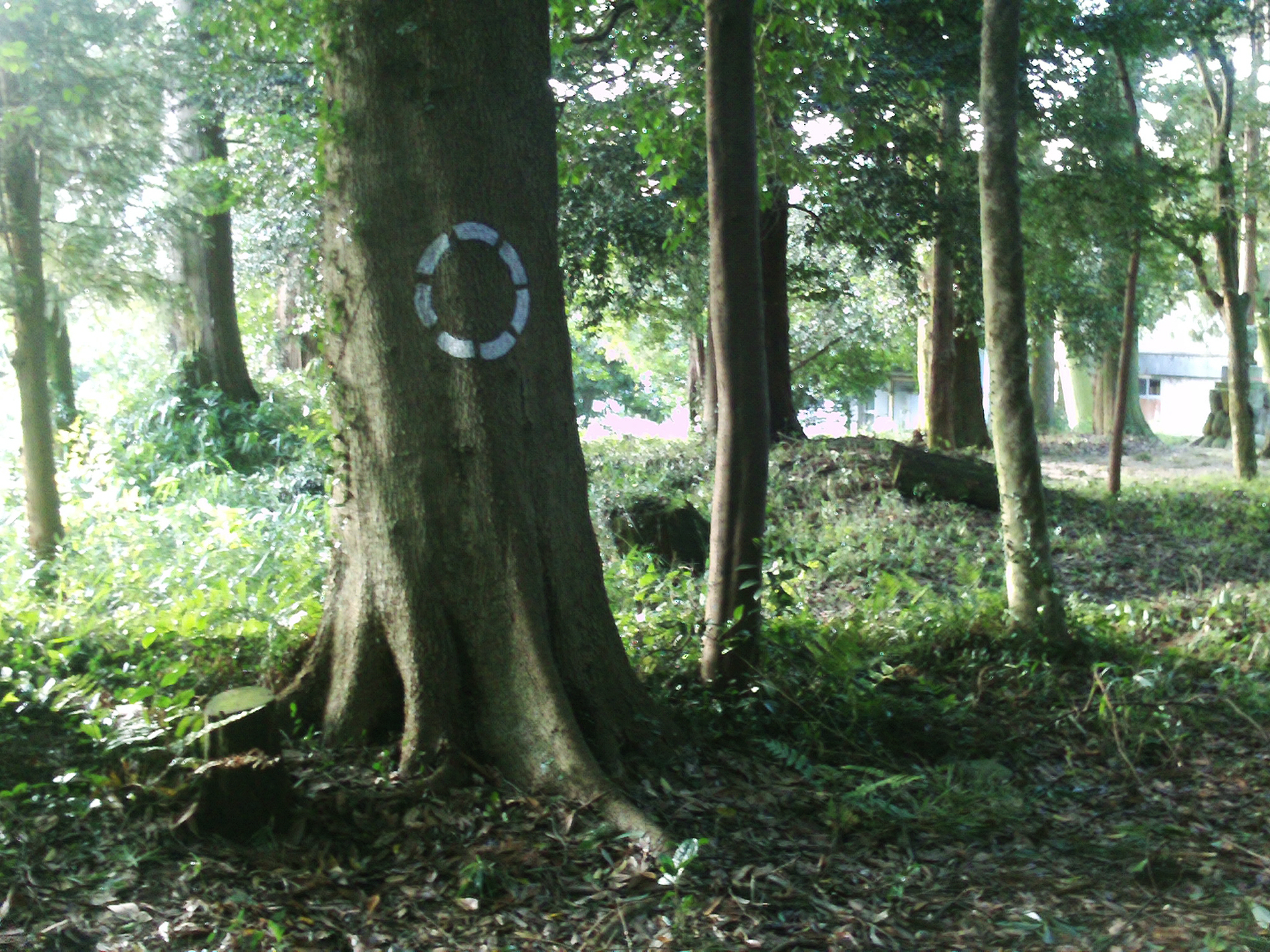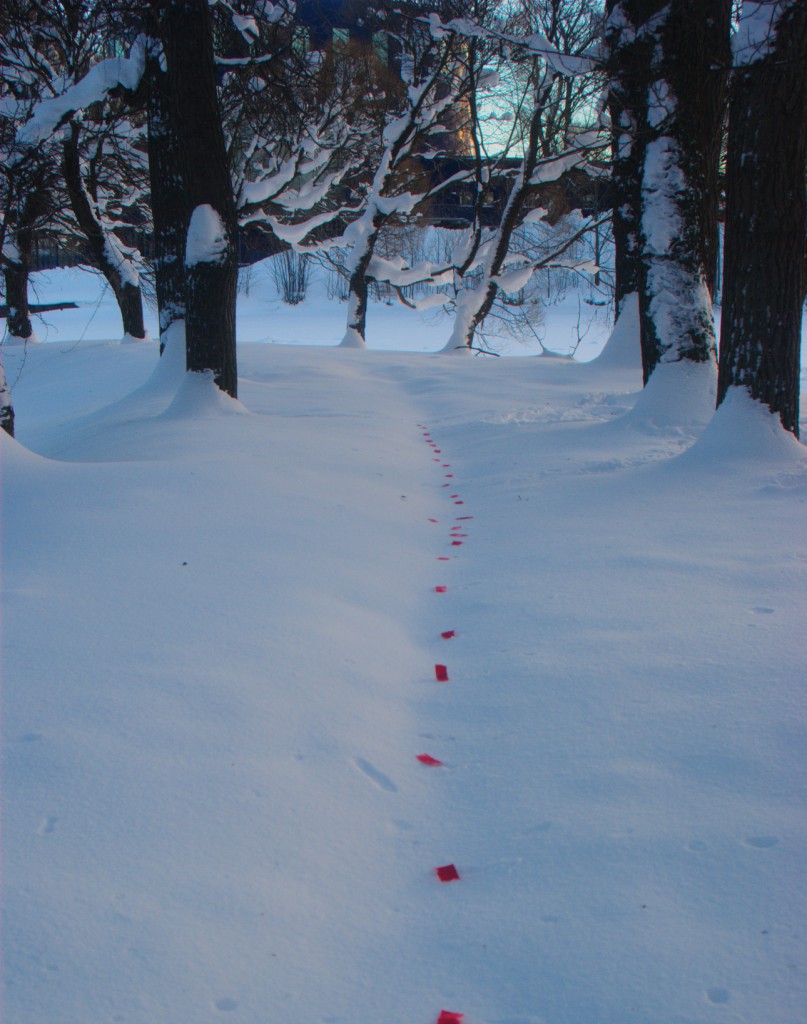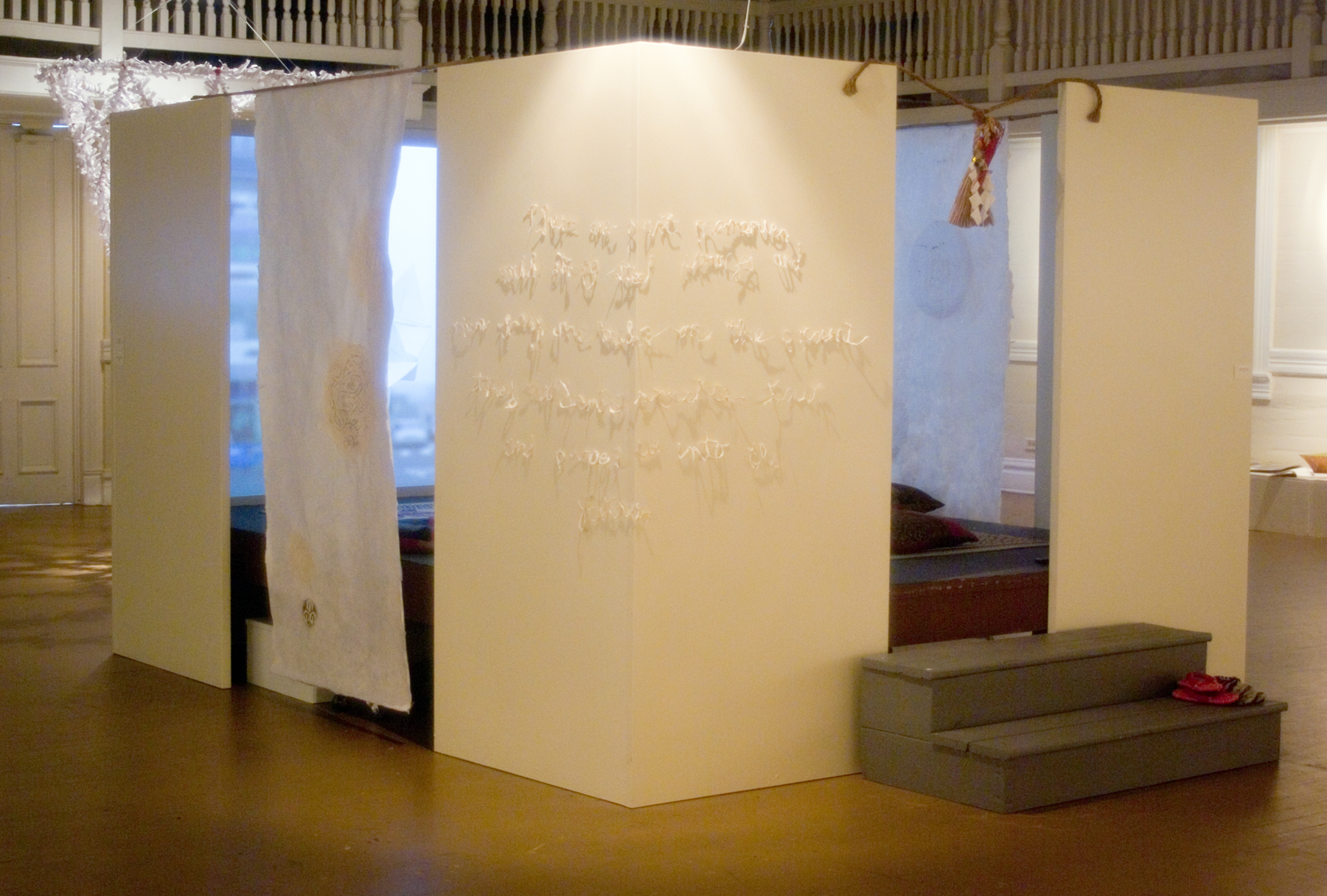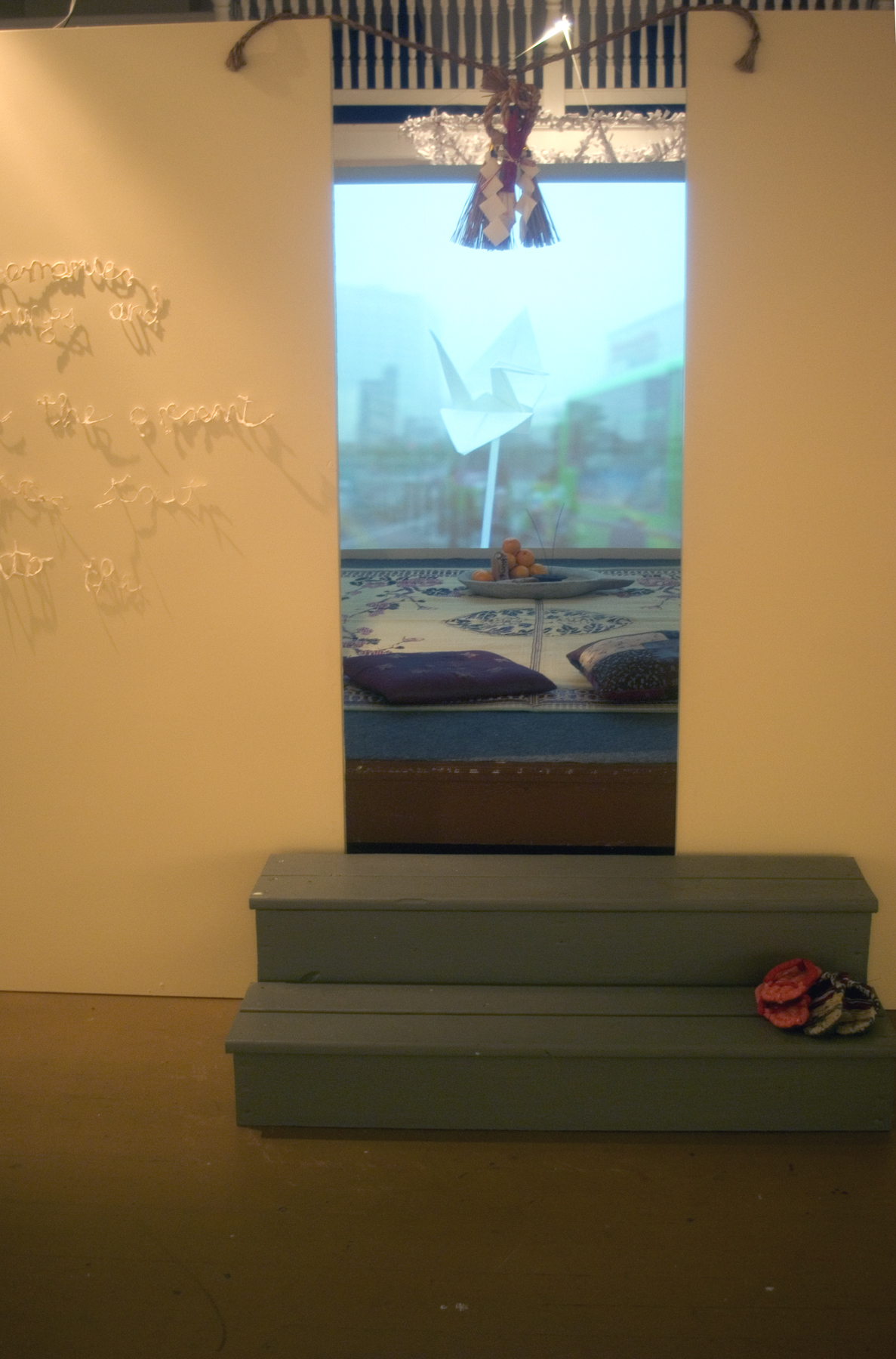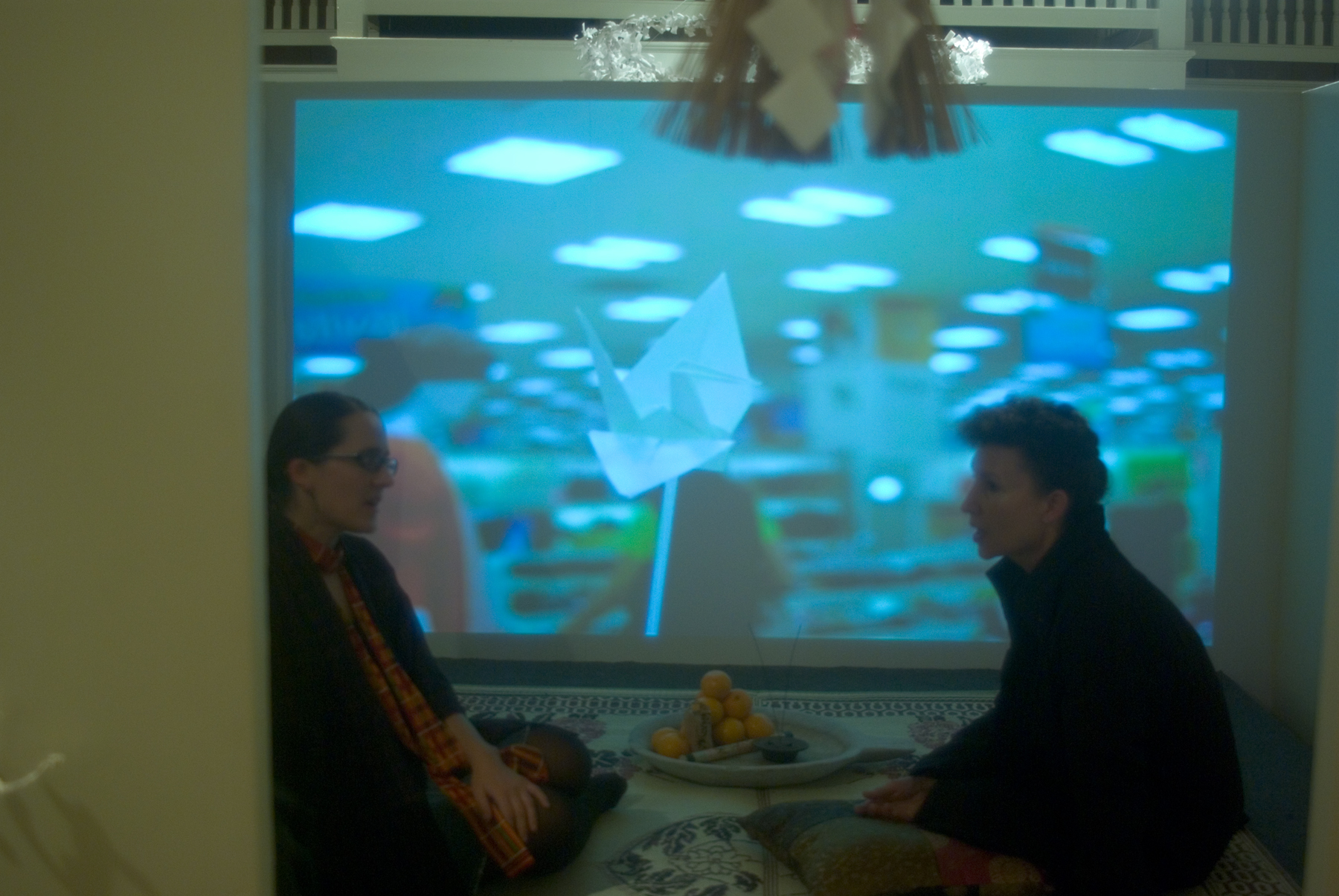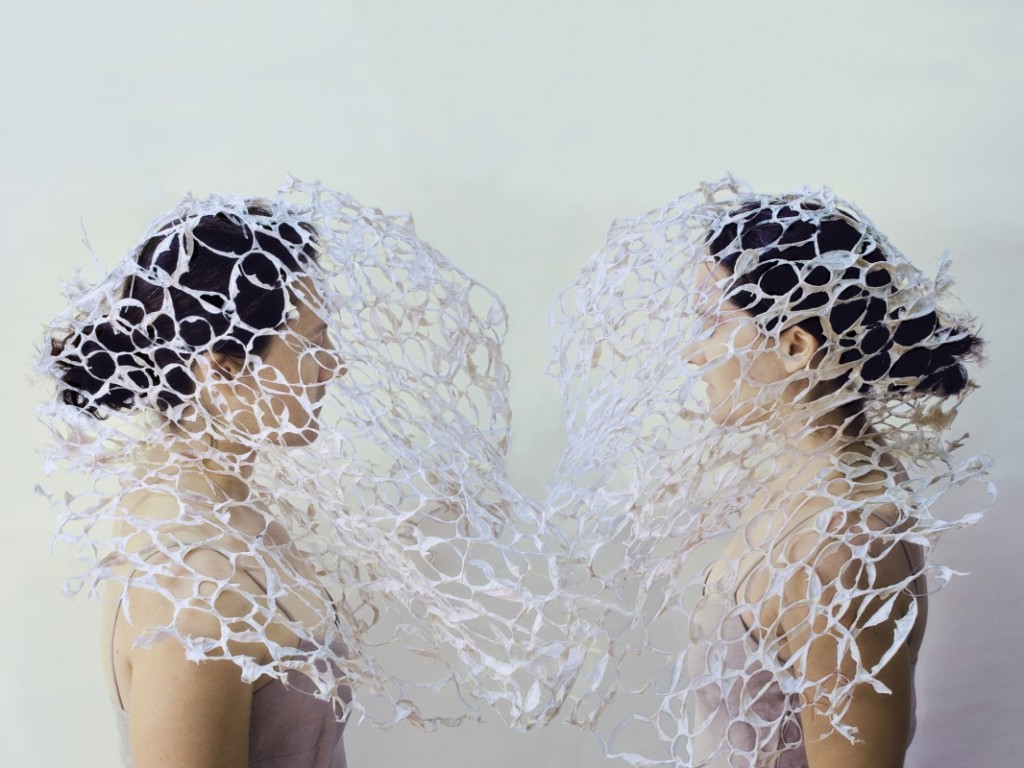Homage
From Notebook : 2009 Japan
“Whole and unity; thing or entity or being. Every whole is a unity and every unity that is divisible is a whole. … Every unity is something and not nothing. Any unity is a thing or an entity or a being. Objects and concepts are unities and beings.” ~ Kurt Gödel
Concepts and thoughts are self-referential. An incestuous repetitive cycle. It becomes an inversion of the original thought and loses itself in interpretations, to boldly arrive at the same concept again. My thoughts are trekking with a mission to discover the unknown and soon I realize that instead it is following an unknown individual; when tapped on the shoulder, it is me that turns around. A variety of experiments revealed the peculiar phenomenon of the blindfolded human asked to walk from point A to point B. He cannot walk in a straight line. His path will slowly curve and curl and at times finds himself back where he has started.
In the East you will find this similar concept in the symbol of Ensō – the incomplete circle – a symbol that through its simplicity reminds us that our ideas are perpetually incomplete.
- “Full Moon in Japan” by Anja Marais ©2009
